#asian carp
Text
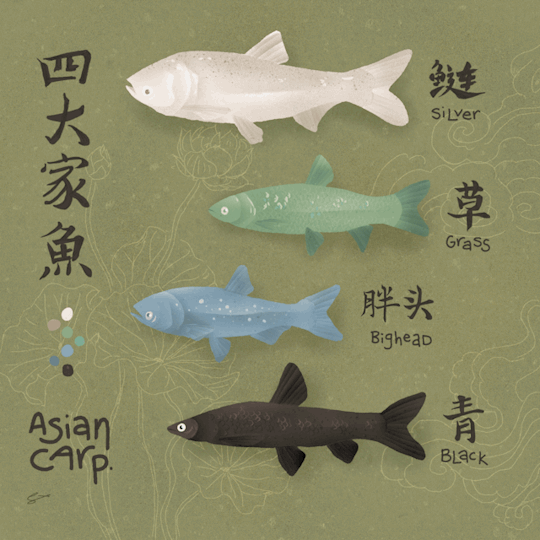
obSESSED with them, genuinely can't stop thinking about them
181 notes
·
View notes
Text
Wet Beast Wednesday: invasive carp
I've mentioned on a few posts that in a previous job I helped remove invasive carp from the Mississippi river and drainage. For this Wet Beast Wednesday I'll discuss the three species that I personally helped remove: the silver carp, bighead carp, and grass carp. The common carp (Cyprinus carpio) and block carp (Mylopharyngodon piceus) are also invasive in North America, but I didn't remove either of those: the black carp because they haven't made it as far north as the area I worked and the common carp because the state governments where we worked considered them commercially important species. All the invasive species collectively described in America as invasive carp or Asian carp are large fish from the family Cyprinidae who are native to east Asia. They have been introduced to areas far beyond their native range for use in aquaculture and for food. Carp aquaculture in China goes back over a thousand years and the three species plus the black carp are known as the "four domesticated fish" for their importance in food and traditional medicine. The carp were introduced to America to clean aquacultural and decorative ponds and quickly escaped into the river system. They are now highly invasive throughout the Mississippi river basin and have also spread into other river systems, including the Illinois and Ohio rivers. All the introduced carp species are considered highly invasive due to outcompeting native species, lacing predators as adults, and their hardiness allowing them to thrive in harsh conditions.

This picture isn't informative at all, I just thought it was funny (image: a close-up of the head of a silver carp, showing its eye and large, open mouth)
Silver carp (Hypophthalmichthys molitrix) made up the majority of the carp I caught. In their native range (from Vietnam to eastern Siberia), silver carp are actually considered threatened due to overfishing and habitat loss. Outside of their native range, they have become highly invasive in multiple parts of the world. Silver carp notable for their large head and silvery scales, which become brighter in healthier fish. They reach an average of 60-100 cm (24-39 in) and 9 kg (20 lbs), but can reach a maximum size of 140 cm (55 in/4.6 ft) and 50 kg (110 lbs). They are filter-feeders, primarily dining on phytoplankton but also eating zooplankton and organic particles. To catch food, they use specialized gill rakers that have fused together into a spongy surface and is coated with mucus that traps particles. As with all Cyprinids, silver carp lack stomachs, instead having their intestines attaching directly to the esophagus. Lacking a stomach makes the fish less efficient in their digestion and they feed near constantly. Silver carp were introduced to America to clean blue-green algae from ponds, aquaculture facilities, and water treatment plants. They consume so much plankton that they can outcompete local species, such as freshwater mussels, paddlefish, buffalo, and shad, as well as larval fish of most species.

(image: a silver carp being held by a person (offscreen). The fish is seen from the side. It is a large fish with a silver color. Its head is relatively large and has no scales. The eye is unusually low on the head)
Silver carp migrate upriver to broadcast spawn, with their eggs and larvae being washed downstream where they grow in shallow waters like floodplains. Silver carp trapped in places without flowing water will not spawn, instead reabsorbing their gametes. Males have rough skin on the front of their pectoral fins, which they will scrape against the bellies of female to induce them to release their eggs. Females that have spawned at least once often have scars on their bellies that can be used to identify that they have reproduced. Silver carp reach sexual maturity between ages 4 to 6 and can live up to 20 years.

I believe I can fly! (image: a silver carp in profile midway through a jump out of the water)
Silver carp are famous for leaping out of the water when startled. They can reach up to 3 m (10 ft) out of the water, though larger individuals are less likely to jump. The sound of boat engines can easily spook the carp into jumping and there are many videos out there of boats moving through rivers surrounded with dozens to hundreds of jumping carp. The jumping behavior combined with the sheer size of the fish makes them a hazard to boaters, as colliding with a carp can damage boats and cause serious injury. Interestingly, carp in their native range are much less likely to jump than those in North America. The reason for this in unknown though it could be because carp in America live in much higher population densities than those at home. It is also possible that the carp first introduced to America happened to have a trait making them more likely to jump and this trait has been passed down to most modern carp.

(image: a small boat with three people on it. In the foreground, dozens of silver carp are jumping out of the water, causing the water to become frothy)

(gif description: a man is sitting on a running boat. A silver carp jumps in from the right side of the frame and hits him in the face, knocking his baseball cap off)
The bighead carp (Hypophthalmichthys nobilis) is closely related to the silver carp, enough so that they can hybridize to make fertile offspring. Bighead carp have darker scales and larger heads, but what really makes them stand out is their size. They reach an average of 60-100 cm (2-3 ft) and 18 kg (40 lbs) but can reach a maximum of 160 cm (5.2 ft) and 50 kg (110 lbs). They fill a similar ecological nice to silver carp, both species being filter feeders with specialized gill rakers used to filter out plankton. Bighead carp prefer zooplankton in contrast to silver carp targeting phytoplankton. They are highly valuable in aquaculture as they grow quickly, allowing for a lot of meat to be developed relatively quickly. Like silver carp, they swim up river to spawn and reach sexual maturity between 2 and 3 years. They can live up to 16 years. Bighead carp will also jump, but are less likely to do so, especially once they mature, and are therefore less notorious than silver carp.

(image: two bighead carp underwater, one closer and to the bottom right and one farther away at the top left. They are very similar in appearance to the silver carp, but have larger heads and darker scales, making them look brown. The closer fish has its mouth open)
Grass carp (Ctenopharyngodon idella) were the species I caught the least. They can be distinguished from the other two with their long, skinny, and round bodies, larger sales, and green coloration. Unlike the other two, grass carp are herbivores with teeth that feed on aquatic vegetation, though they also consume detritus and invertebrates in smaller amounts. Grass carp can eat up to a few times their weight in food a day. Grass carp can destroy whole patches of aquatic vegetation, which removes food sources for other animal, removes refuges for fish and other animals to hide, and can drastically alter the trophic web of local areas. They live in still ponds or rivers with slow currents, but move into fast-flowing rivers and swim upstream to spawn. They can reach between 60 and 100 cm (23.5 - 39.5 in) on average, but can get up to 2 m (6.6 ft) and 45 kg (100 lbs). Grass carp were first introduced to America to act as weed control in ponds before escaping into the wild. It is still possible to import grass carp for weed control, which is astonishing to me since thats how we got into this mess in the first place. Grass carp are highly valuable in fisheries and are used as a food source throughout their native range. They are the most farmed fish by biomass, with over 5 million tonnes of grass carp produced in fisheries every year. The second most farmed fish is the silver carp.

(image: a grass carp underwater. Its body is slender and torpedo-shaped, with large, distinct, green scales. Its head is scaleless and its eye is level with its mouth. A second fish is peeking into frame at the bottom right)
One of the problems with controlling carp in America is the lack of a market for them. They are not commonly eaten in America despite being a major food source in China and other parts of east Asia. This is in part because of the association the phrase "Asian carp" has with the common carp, which was introduced to North America before the other species and is generally considered to have poor-quality meat. Because there is no market for invasive carp, fishermen do not bother removing them from the rivers and many do not bother taking the time to kill the ones they do catch. A few conservation efforts are attempting to make a market for the carp so that fishermen will take them. When I was at my last job, we gave the carp we caught to someone who used them for fertilizer and bait. A current effort by the Illinois Department of Natural Resources and the U.S. Environmental Protection Agency is to rebrand the carp as Copi (from copious) in an attempt to get around the stigma that carp tastes bad and get Americans to start eating them. Copi is currently being sold in or distributed to multiple states and DC. The project has already exceeded the expected amount of fish removed in weight for the first year. Other rebrand attempts include Silverfin, the perfect catche, and (my personal favorite) Kentucky tuna. This rebranding is part of a major push to try to keep the carp out of the Great Lakes, though grass carp have already gotten into Lake Erie. If you can't beat them, eat them.

Image: the copi logo. It is the word "copi" written in a dark blue, blocky, minimalistic font. The letter O is replaced by a simplistic drawing of a light blue fish, whose tail forms the curve in the letter C)
#wet beast wednesday#asian carp#carp#silver carp#bighead carp#grass carp#invasive carp#invasive species#fish#fishblr#fishposting#conservation#freshwater biology#freshwater fish#freshwater ecology#biology#zoology#ecology#animal facts
80 notes
·
View notes
Text
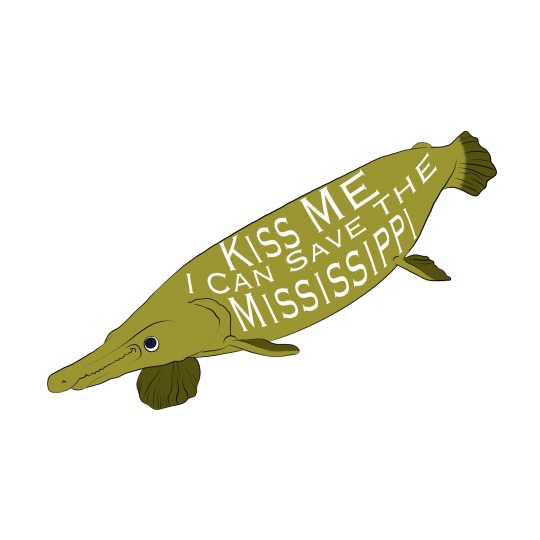
Did you know that Asian Carp are an invasive species threatening the health of the Mississippi River? But the Alligator Gar could help! They’re not a particularly beloved species as they are large and have lots and lots of sharp teeth, but supporting their population could save the Mississippi. The real fear is that if the Carp reach the Great Lakes, our ecosystem will be throw totally out of whack.
I mean, look at this dumb asshole, who wouldn’t want that in their river?
I’m just starting this project, but eventually I’d like to have all my art made into pins and stickers that will generate donations, this guy would obviously donate to the restocking of the Gar population in the Mississippi River.
#alligator gar#mississippi#asian carp#invasive species#conservation#ecosystem#great lakes#save the planet
136 notes
·
View notes
Text
youtube
They’re hooked 🎣 This unique fishing tournament is helping decrease the population of invasive fish in the Great Lakes region
For more environmental news, subscribe to NowThis News.
#AsianCarp #fishing #illinois #Politics #News #NowThis
#now this news#now this#solarpunk#fish#invasive species#invasive fish#USA#Great Lakes#Great Lakes region#Asian carp#illinois#fishing competition#Youtube
3 notes
·
View notes
Text
Girl the Great Lakes are so fucked. I keep reading more and more about Asian carp and becoming more and more existentially distraught. If they get into the Lakes the ecosystem is dooooomed. When is the campaign to fish these guys out of existence going to become successful 😭
#truly the lionfish of the freshwater world#why don't we have carp tournaments like they have lionfish tournaments and festivals down south#I wish I had a friend who liked to fish. Personally it grosses me out bc ew scales 😔 but I would totally bribe them to catch some for me#you do the dirty work i cook us a meal.#asian carp#copi#invasivore#invasive species#great lakes
0 notes
Video
vimeo
I see we are getting “politically correct” in describing the “Invasive Carp” that is threatening the Great Lakes. Residents and media have historically referred to this carp as the “Asian carp.” Regardless of what one calls them, they are voracious.
0 notes
Text

Utagawa Hiroshige
Carp Ascending a Waterfall
1847-52
#utagawa hiroshige#carp#waterfalls#woodcut#japanese woodblock print#japanese art#asian art#art history#fish#fishing#beautiful fish#nature#wildlife#tumblr art#tumblraesthetic#aesthetictumblr#tumblrposts#japan#beauty#fishkeeping
819 notes
·
View notes
Text
Happy #LeapYear #LeapDay
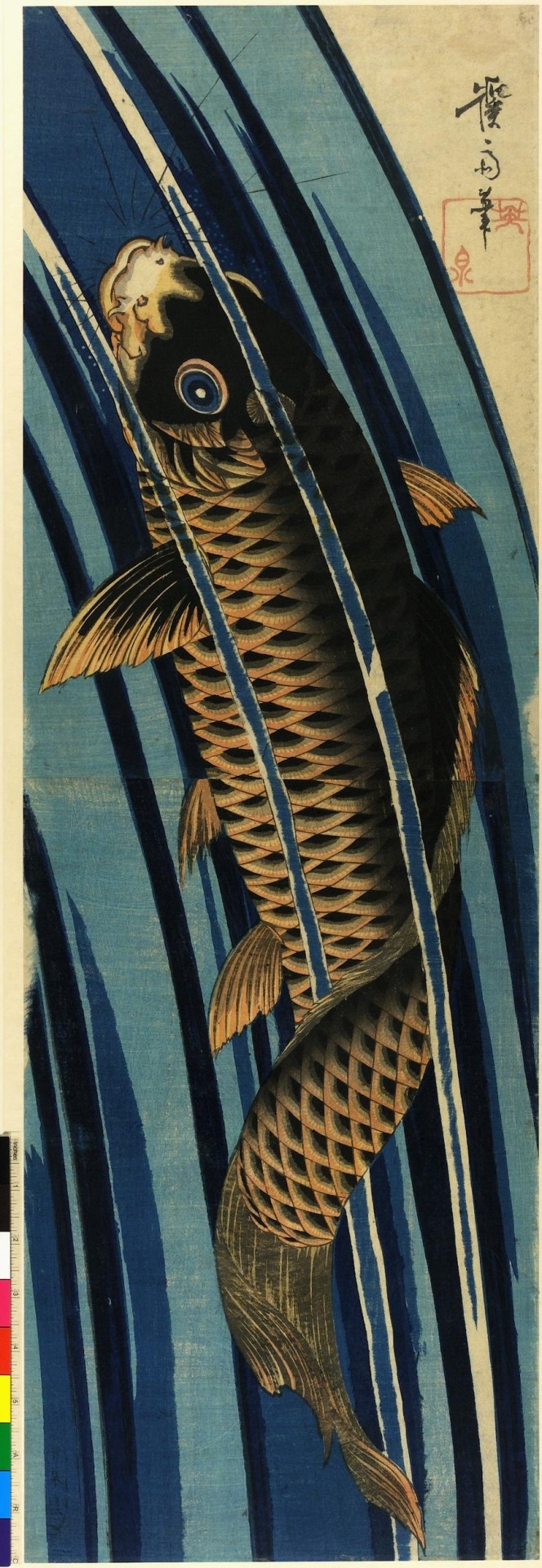

Keisai Eisen 渓斉英泉 (1790-1848)
Woodblock prints, kakemono-e, Edo, 1830s-40s:
1.. Carp leaping up a waterfall.
https://www.britishmuseum.org/collection/object/A_1906-1220-0-311
2. Courtesan parading in kimono patterned with leaping carp.
https://www.britishmuseum.org/collection/object/A_1906-1220-0-312
British Museum collection
#animals in art#animal holiday#19th century art#carp#fish#leaping carp#leap year#leap day#Japanese art#East Asian art#Asian art#woodblock print#print#ukiyo-e#Keisai Eisen#kakemono-e#British Museum
44 notes
·
View notes
Text
u all love my weird animal body part posts
16 notes
·
View notes
Text
after writing all those papers for my arts electives and feeling like my skin was peeling off, the speed with which i’m clipping through this technical forestry essay is literally restoring my ego one bland and well-cited (caffffine, 2024) paragraph at a time like ohhhh i’m not a dumbass i’m just in stem
14 notes
·
View notes
Text
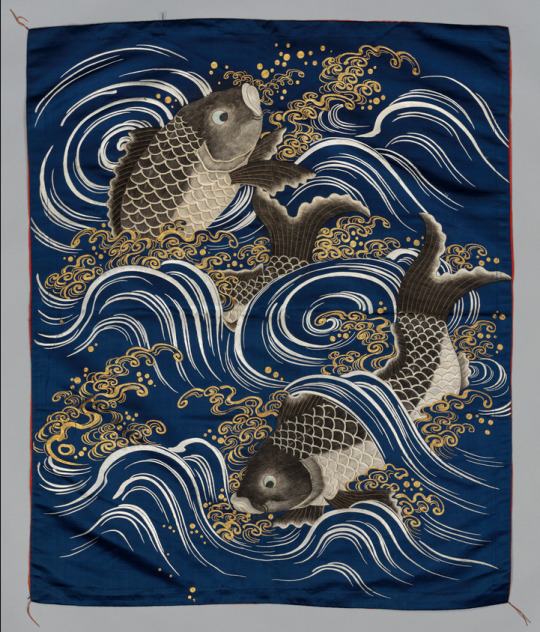
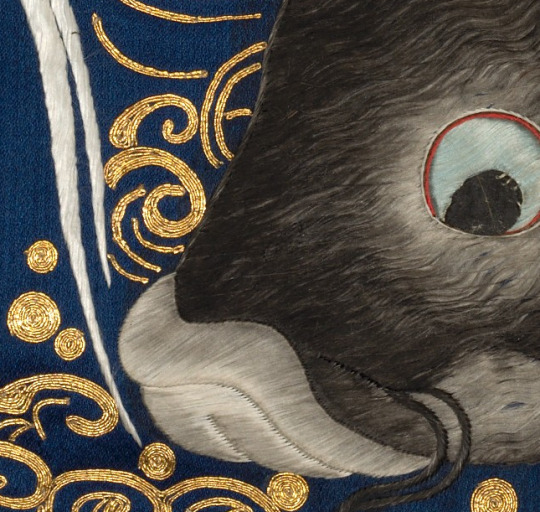


Fukusa with Carp in Waves (波鯉図刺繍袱紗) - details
Gift Cover (Fukusa) with Carp in Waves, 1868–1912. Japan, Meiji period (1868-1912). Silk: embroidered; metallic thread; overall: 87.3 x 71.8 cm (34 3/8 x 28 1/4 in.)
The motif of carp in rough water originated in China. The expression “carp jumping over the Dragon Gate” (liyu tiao longmen) refers to attaining success in life, or, historically, to passing the imperial examinations for civil service. In Japan, therefore, a gift cover (fukusa) like this would have been appropriate to celebrate the recipient’s achievements.
#found by kino#Fukusa with Carp in Waves#japanese embroidery#fukusa#meji period#asian art#textile art#japanese art#波鯉図刺繍袱紗
11 notes
·
View notes
Photo

Black Carp) mid 19th century by Yashima Gakutei (colour woodblock print)
#art#artwork#kunst#kunstwerk#yashima gakutei#artist#künstler#asian art#asiatische kunst#nature#natur#flora#fauna#water#wasser#swimming#schwimmen#animal#tier#fish#fisch#carp#black carp#karpfen#under water#unterwasser#colors#farben#woodblock print#art prints
5 notes
·
View notes
Text
please look at this fucking fish.

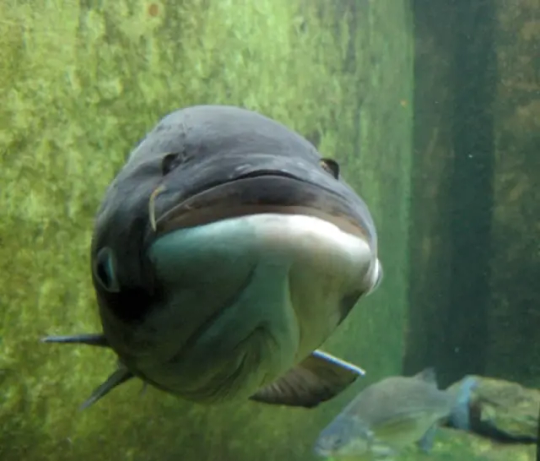

#gray.txt#i am in tears#this is the bighead carp (sometimes the asian carp) & it's an invasive species in the americas
5 notes
·
View notes
Text
Parts of Nevada are being overrun by an explosion of flightless, ground-dwelling cannibalistic insects creating nightmares of Biblical proportions.
Business and residents said they are battling millions of Mormon crickets that descended on the state this week in an effort save land and morale.
In Elko, a city in northeastern Nevada south of the Idaho border, crickets converged Monday, covering roads, vegetation, and even local hospital walls, multiple media outlets are reporting.
“Just to get patients into the hospital we had people out there with leaf blowers, with brooms, at one point we even had a tractor with a snowplow on it just to push the piles of crickets and move them on their way,” Steve Burrows, director of community relations at Northeastern Nevada Regional Hospital, told local KSL TV.
Native to western North America, the crickets' populations are cyclic over many years and some residents in the mini-metropolis of just over 20,000 people, are not pleased with their return.
“They’re just gross,” Precious Drake of Elko, told the outlet. “They look like spiders, and they poop everywhere.”
What do Mormon Crickets eat?
According to the University of Nevada in Reno, Mormon crickets can grow larger than two inches and are found in rangelands west of the Missouri River and across all of Nevada. They eat perennials, grass, shrubs and crops, subsequently reducing feed for grazing wildlife and livestock.
Mormon crickets are also cannibalistic and, if their bellies are not full, will eat one another dead or alive.
The insects are not true crickets but are "shield-backed, short-winged katydids that resemble fat grasshoppers that cannot fly," according to the university. Adult Mormon crickets have long antennae and a shiny exoskeleton in a wide array of colors and patterns.
In mass quantities, their feeding contributes to soil erosion, poor water quality, nutrient depleted soils and other land damage.
Mormon crickets prefer drought conditions and can cause "substantial economic losses to rangeland, cropland, and home gardens," according to the university. "This is particularly true as adults and nymphs of Mormon crickets migrate in a band, eating plants along their paths."
The Nevada Department of Agriculture did not immediately respond to USA TODAY Friday morning to say how many counties reported an infestation.
Buggers' name stems from Utah
Last June, farmers and government officials across Nevada northeast to Montana battled the insects as they destroyed crops.
The insect's name dates back to the 1800s, when the bugs ruined the fields of Mormon settlers in Utah. But amidst drought and warming temperatures – conditions favored by the insects – outbreaks across the West have worsened.
According to Utah State University, an infestation is when there are at least eight crickets per square yard of land.
Because Utah's spring has been cool and wet, only "a few small infestations" have been reported so far this year, according to Utah Public Radio.
'Greasy with the squashed entrails'
In 2017, Arlington, Oregon, saw its largest Mormon cricket outbreak since the 1940s. The roads were "greasy with the squashed entrails of the huge insects," which damaged nearby wheat crops, the Associated Press reported.
Skye Krebs, a local rancher there, called outbreak "truly biblical."
"On the highways, once you get them killed, then the rest of them come," Krebs said.
Farmers who experience infestation issues are encouraged to call the their state's respective Department of Agriculture.
#nunyas news#they changed the name of the asian carp#because of fee fees#wonder if they'll do this too
11 notes
·
View notes
Text
I like hitting random strangers with the knowledge of my human teeth jar.
They look like they've been smacked by an Asian Carp.
If they still talk to me afterwards they're worthy.
#funny#meme#shitpost#fish#i chose asian carp bc those fuckers got FORCE behind that tailslap.#and they're invasive#so you'll be hit more than once
8 notes
·
View notes
Photo

(via Common and Golden Carp (1935) by Ohara Koson Photographic Print by micaroline)
#findyourthing#redbubble#art#ohara#koson#ohara koson#koi#japanese#carp#pond#japan#koi fish#goldfish#asia news#oriental#japanese art#asian art#lake#water lillies#water lily#japanese painting
7 notes
·
View notes